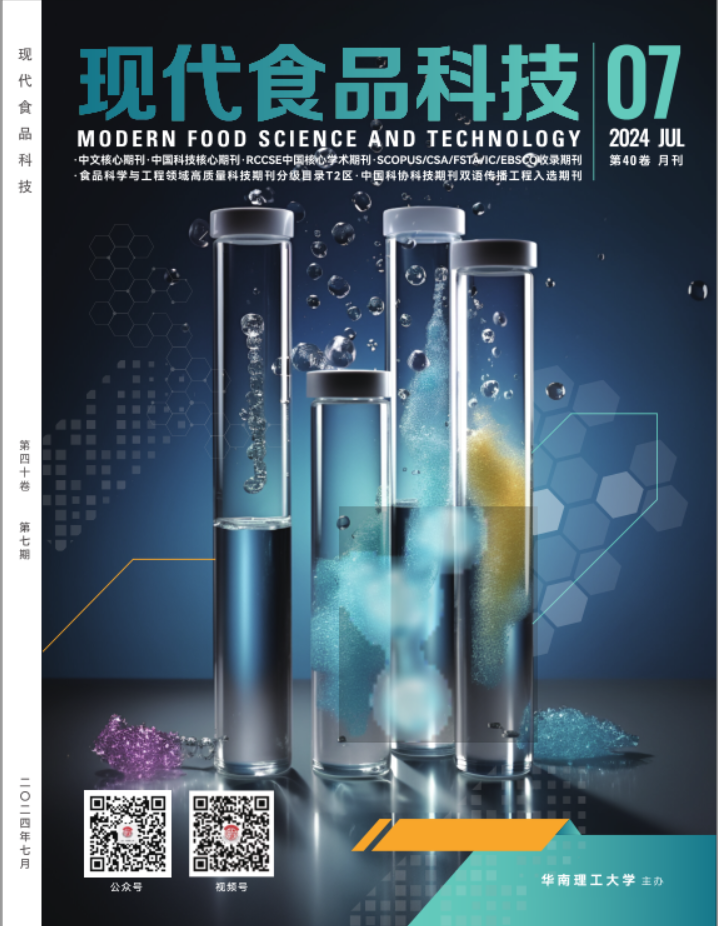Abstract:
In view of the high toxicity of aflatoxin G1 (AFG1) and the difficulty in decomposing and effectively removing it, an effective method for selective adsorption and elimination of AFG1 was established via intercalation of AFG1 and DNA. The optimum reaction conditions for intercalating AFG1 into DNA molecules were pH 7.4 and 30 ℃, and the DNA binding saturation value and removal rate were 1.66 and 88.14%. After the addition of sodium chloride, calcium chloride, L-aspartic acid, glucose, urea, leucine, lysine or vitamin C, the DNA binding saturation values were 1.45, 1.45, 1.29, 1.05, 1.95, 1.95, 2.32 and 2.90 respectively, with the removal rates being 78.08%, 76.44%, 75.92%, 75.16%, 88.41%, 88.67%, 88.87% and 90.27% respectively. A negatively charged group (such as sodium chloride, calcium chloride, L-aspartic acid and glucose), or a relatively high ionic strength, was not conducive to the intercalation of AFG1 and DNA, whilst substances carrying positively charged groups and similar groups (such as urea, leucine, lysine, and vitamin C) were conducive to the AFG1-DNA intercalation. The removal rate of AFG1 in peanut oil reached over 80%. The kinetic correlation coefficient and adsorption capacity showed that the adsorption process conformed to the pseudo-second-order order model, indicating that the rate-limiting step of the adsorption process was chemical interaction. The adsorption process followed the Freundlich isotherm adsorption model, thus the adsorption process was multilayer adsorption. Thermodynamic results showed that the adsorption of AFG1 by DNA was a spontaneous exothermic process. In conclusion, DNA can selectively adsorb AFG1. Therefore, new DNA materials can be further developed, which is of great significance in the removal of aflatoxin in food.

